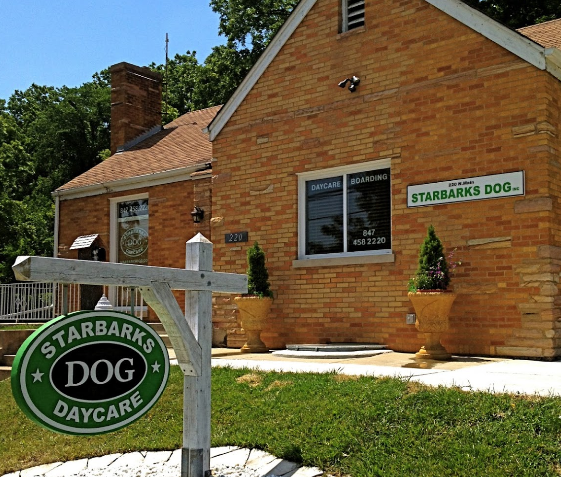It’s interesting to me how many people get confused with the difference between service marks and trademarks. The application process for each is exactly the same through the United States Patent and Trademark Office.
The only main difference is that a service mark is used to distinguish a companies services while a trademark applies to the goods of a company. Service mark protection provides exactly the same benefits as a trademark registration.
Should You Apply for a Trademark or a Service Mark?
When you are building a brand and working to make a “name” for yourself, securing the legal rights to your brand or trade name by registering a Federal Trademark is one of the most important things you can do as an entrepreneur. Make no mistake, a Federal registration provides power protections to your brand.
But at no point do you have to make a decision about whether to apply for a service mark or a trade mark. There is no “check the box” on your trademark application.
The main and only difference is in which symbol you will use prior to obtaining full registration from the USPTO.
If you are selling services, then you will use the service mark symbol (℠). If you are selling goods, then you will use the trademark symbol (™).
So the question really becomes whether you should register your trade/service mark at all? And the answer is yes, of course. The last thing you want when you are just starting to build your online business is for another company to hijack your company name or logo. This could lead to confusion for your customers, and even a loss of revenue.
By registering your trademark or service mark at the Federal level, you can prevent these things from happening.
The Difference: Trademarks vs. Service Marks
The primary purpose to register your intellectual property (specifically trademarks and service marks) with the U.S. Patent and Trademark Office is to prevent confusion in the marketplace. On a more selfish level, registering your trademarks confers the added benefit that you obtain the exclusive right to sell products and services in the United States under your registered brand name.
What Is a Trademark?
Simply put, a trademark is a word, phrase, symbol, slogan or design (such as a business name or logo) that serves to primarily identify the source of tangible goods for a product or service. When you think of any major brand name in the United States, such as Nike, Starbucks or Apple, what you are really thinking of are the registered trademarks for the parent companies of those brands.
Think about it… if I handed you a bottle of beer from Boston Beer Company, would you know that this is actually a Sam Adams? That is the power of a trademark. Trademarks are recognized as brand names, and they likewise protect the owners of their trademarks from other business competitors attempting to use their same brand names.
One common misconception with trademarks is that a company can only have one trademark. This is simply not true. The type of trademark a brand may register is not limited. A brand may register the name of their business, a slogan and a logo. The best example of this is Nike, my favorite shoe company. They have registered their brand name, the famous Nike “swoosh”, and the slogan “Just Do It.”
There are numerous examples of this in the marketplace, and many large companies have entire teams of lawyers working on trademarks for them as their full-time jobs. This is how important and valuable trademarks can be to your business.
What is a Service Mark?
Service marks are basically trademarks for services or service providers. The term trademark and service mark are used interchangeably.
Whereas a trademark distinguishes the goods of one company from another, a service mark distinguishes the services of one company from another.
Some famous service marks include:
- Southwest Airlines
- Marriott Hotels
- NaturaLawn
Like trademarks, service marks can also take the form of a slogan or tagline such as “Bags Fly Free” from Southwest Airlines.
Many companies offer both goods and services for sale, so whether they are applying for a trademark or service mark can be a source of confusion in theory, but in practice this is not a big deal. As mentioned before, there is no place to “check the box” on the trademark application, and once the mark registers, the company may use the ® symbol on both service marks and trademarks.
The Benefits of Registering a Trademark or Service Mark
There are many benefits to choosing to register your trademarks and/or service marks. Your trademark identifies your company as the source of goods (or source of services in the case of a service mark) that you sell. Not only can you use your federal trademark registration or service mark registration to prevent other competitors from using your trademarks, including name, logos and slogans, but you can also send cease and desist letters to stop infringing companies from using these assets if they are currently using them.
Many business owners believe that by using their name, they have common law rights and protections that are sufficient. Alternatively, some people believe they can save money by registering their trademark with the Secretary of State in the State where they live or operate their business. While this does provide some protection, Federal Trademarks offer protection to all 50 states and can be used to stop you from using a trademark that you have registered at just the state level.
Federal trademark rights also allow you to sue in Federal Court for trademark infringement, provide notice through an online database to any potential future filers that your name has been registered, and most importantly, provide you with peace of mind knowing that nobody can take your name, or force you to undergo an expensive and time consuming rebrand.
Applying for a Trademark or Service Mark
Whether you are applying for a service mark or a trademark, the registration process is the exact same.
It is also important to understand that the process is deceptively easy. Note that I didn’t say the process is easy, I said that it is deceptively easy. What I mean by this is that to someone who didn’t know better, they would think that registering a trademark is as simple as filing from paperwork with the U.S. Patent and Trademark Office and calling it a day. Nothing could be further from the truth.
At Hawthorn Law®, we have developed a 4R Framework℠ for how we process every trademark application or our clients.
- Research
- Ready
- Respond
- Register
Here’s how it goes.
#1 Research Your Proposed Trademark
Everything starts with researching your trademark. We recommend you complete an initial knock-out trademark search using the TESS Database at uspto.gov, and then hire a lawyer to complete a comprehensive search to uncover all near match and phonetically equivalent names, as well as any other names that may cause a likelihood of confusion denial with your proposed mark.
Once you have completed your search, and determined that there are no problem marks, it is time to…
#2 Ready Your Application
Filing your trademark application involves several important steps.
You must determine who the trademark owner will be. Typically this will be your company (i.e. LLC), but in some cases it may be you as a sole proprietor. If you have not yet set up your company, then you will need to do so before you file your trademark application.
Next, you must determine the classes of goods and services you will be filing in. To do this, we recommend making a list of every single product or service you intend to use the mark in connection with. From there, you can the Trademark ID Manual Master Database to look up the classes that each product or service is listed in. From there, you can start to craft a description of the goods or services you will be (or already are) selling.
Finally, if you are currently selling goods or services under you mark, you must prepare a specimen that shows the use of your trademark or service mark in commerce. For this, you will also need to include the date that you first used the mark anywhere, as well as the date that you first used the mark in commerce for this particular class of goods or services. You will need a specimen for each class of goods or services you decide to include in your trademark application.
If you decide not to submit a specimen (because you aren’t currently selling products or services under your mark), then you can file a Statement/Allegation of Use later on with a $100 filing fee.
If your company (or you) is not located in the United States, then you will need to hire a US Lawyer or trademark agent to file your application for you.
You will need to sign you application (electronically) and then pay the filing fees and submit the application. Keep in mind that the filing date of your trademark application is incredibly important. The USPTO uses a “first to file” system. This means that if someone else who sells the exact same products you sell and intends to use your same name files their application before you, then they will have priority to the name in any legal action under Federal Law. So get your application in as quickly as possible!
Next you will have to wait and then…
#3 – Respond to any Office Actions
Currently (as of September 2022), it is taking approximately 8.3 months for the attorney assigned to your application to take any action on it. They could merely approve your application for publication, submit a non-substantive office action, or deny your application.
If you are asked to respond to an office action, you will have 6 months to respond. For non-substantive office actions, you may be asked to make minor tweaks or edits to your application. But for substantive office actions, which are frequently preliminary denials, you may be asked to provide a legal brief in support of your application and overcoming the initial denial. If this happens, we recommend that you seek out legal assistance from an experienced trademark attorney to help you draft this response (or even determine if it is necessary).
Once you have responded to all requests from the Examining Attorney, your application will move forward to publication. Assuming that nobody files an opposition to your application (this happens about 1% of the time), then your trademark will proceed to…
#4 – Registration
Once you have a registered trademark, you will need to monitor and protect your trademark. Remember that you now have secured the exclusive right to use of the mark in commerce throughout the United States. Your registered mark identifies your company as the exclusive source of the goods you are selling (or source of a service in the case of a service mark). If there are any competitors who are infringing on your trademark by using a confusingly similar mark, you will want to have a lawyer send them a cease and desist letter.
How Long Does it Take to Register a Trademark or Service Mark?
While the process of registering a trademark is not overly complicated, it does have a number of potential landmines that, if not handled correctly at the beginning, can lead to problems later on and delay registration of your mark.
As mentioned before, it is currently taking approximately 8.3 months for the examining attorneys to take action on a new application, and 13.5 months on average for trademark applications to be resolved. With this in mind, you should expect it to take anywhere from 12-18 months to register your trademark, longer if you have multiple office actions to respond to.
At Hawthorn Law® we are all about Trademarks!
At Hawthorn Law®, we are all about Trademarks and brand protection. If you are a creative entrepreneur trying to built an online brand, investing in a trademark to protect the rights to your business name is one of the smartest things you can do for your business.
If you are interested in learning more about how we can help you, please feel free to schedule a strategy session so we can map out a plan for your online business. If you are ready to get started with your trademark, click here to schedule a low-cost brand strategy and trademark review session to go over your options! (If you are looking for guidance on starting your business, LLC's, or general legal proctections and are not ready to proceed with a trademark, then please schedule a strategy call instead.)



